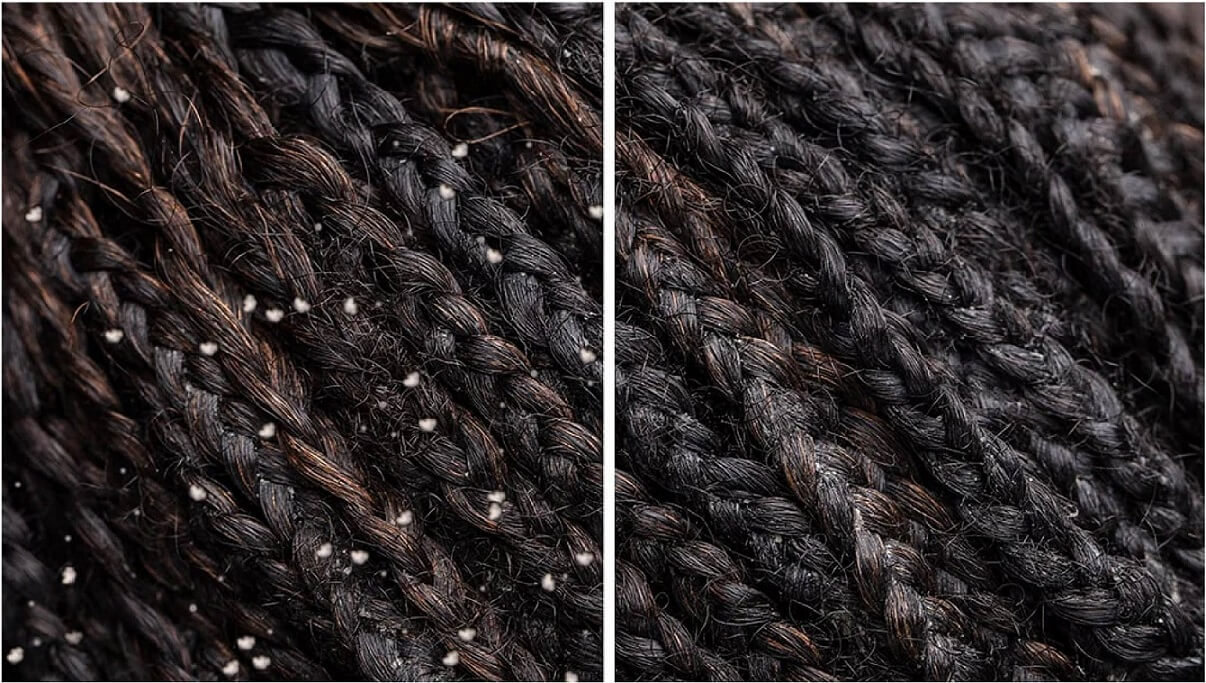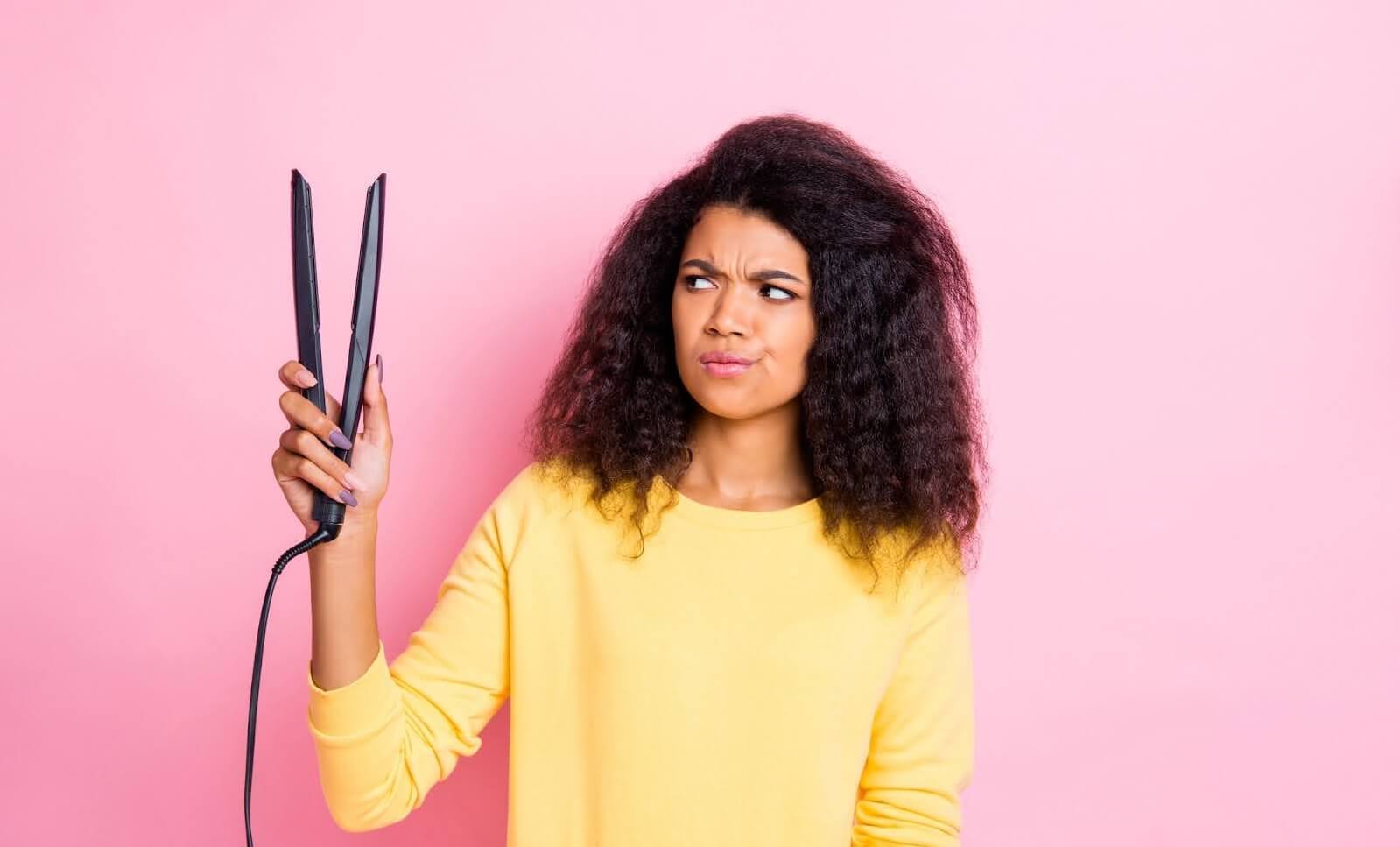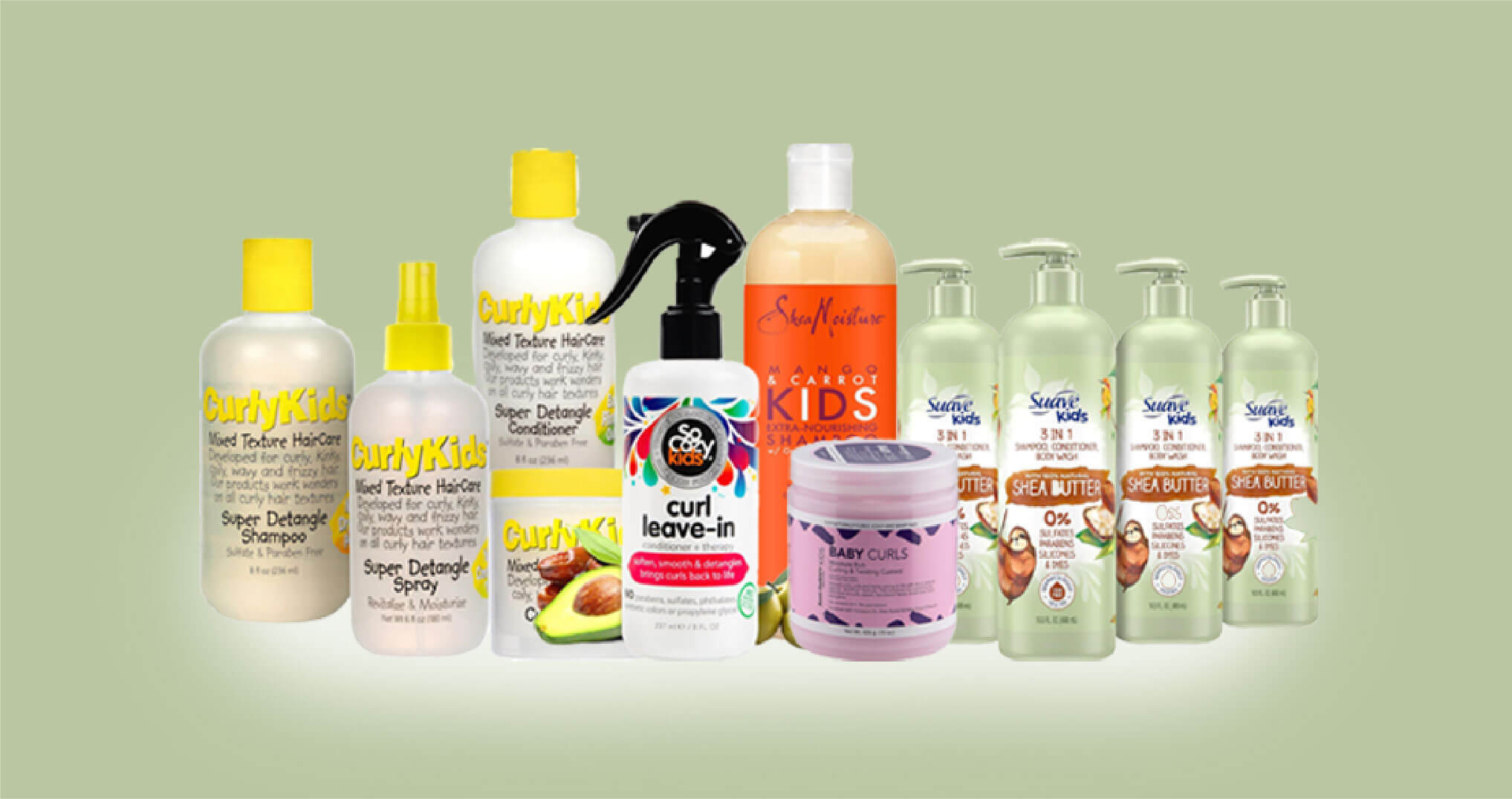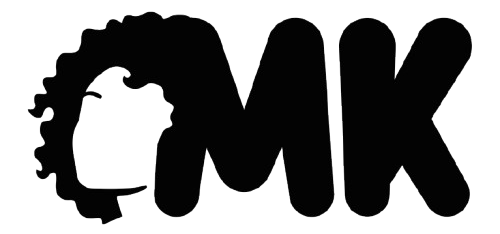Dandruff is a common scalp condition affecting people of all hair types. Biracial hair often combines straight and curly stands, making it more prone to dryness, flakiness, and dandruff. Without knowing how to get rid of dandruff in biracial hair, these issues can become significant.
Dandruff, known for white flakes, isn’t necessarily harmful. However, it can lead to discomfort, itchiness, and embarrassment. Fortunately, with the right approach, you can keep your hair dandruff-free and maintain healthy hair.
What Is Dandruff?
Dandruff is the shedding of dead skin cells from the scalp. When dandruff is present, white flakes will appear on your scalp, in your hair, or on your clothing. Ultimately, there are two primary types of dandruff – dry and oily dandruff.
Dry Dandruff forms as the result of a dry scalp. Usually, dry dandruff comes from cold weather, a dehydrated scalp, or harsh hair products that strip out the hair’s moisture.
Oily Dandruff, or Seborrheic Dermatitis, forms from the scalp’s overproduction of natural oils. Often, it creates yellowish flakes and may leave the scalp inflamed.
Why Does Biracial Hair Get Dandruff?
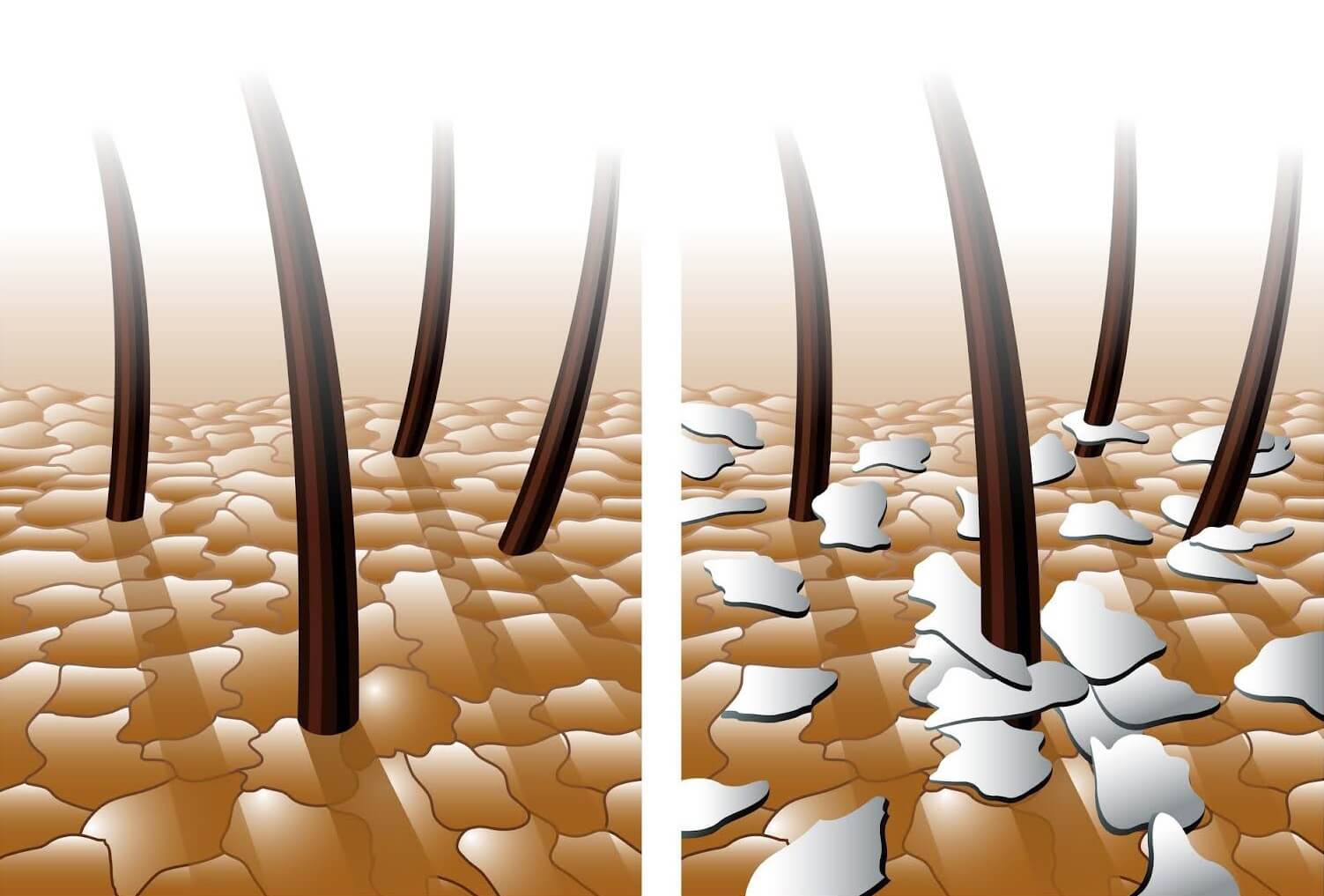
Biracial hair is unique because it combines different textures from both African and Caucasian hair types. When combined, these textures create a beautiful aesthetic but produce unique challenges.
Biracial hair typically has a pronounced curl pattern. Because of this pattern, natural oils from the scalp have a harder time traveling down the hair shaft. Likewise, biracial hair is more prone to dryness, breakage, and dandruff.
Diet, product build-up, environmental conditions, and stress increase the likelihood of dandruff in biracial hair. Some common causes of dandruff in biracial hair include:
Dry Scalp: Wavy-curly hair patterns are more prone to dryness than straight hair. Harsh shampoos, cold weather, and lack of moisture on the scalp further aggravate dandruff.
Product Build Up: Curly-specific products, like styling gels and leave-in conditioners, can build up on the scalp over time. Buildup can clog hair follicles and cause dandruff or scalp irritation.
Seborrheic Dermatitis: This chronic inflammatory skin condition causes the scalp to become red, oily, and flaky. It can lead to larger, greasy dandruff flakes that are difficult to treat with regular shampoos.
Malassezia Fungus: This yeast-like fungus naturally lives on the scalp and can contribute to dandruff. When it grows excessively, it can lead to irritation and flaking.
How to Get Rid of Dandruff in Biracial Hair
You must combine effective treatments, consistent hair care routines, and the right products to eliminate dandruff. Follow these steps to manage and prevent dandruff:
1. Use a Mild, Moisturizing Shampoo
The first step in treating dandruff in biracial hair is to use a shampoo specifically designed for dry or flaky scalps. Harsh shampoos that contain sulfates can strip the scalp of its natural oils, worsening dandruff and dryness. Instead, look for sulfate-free shampoos that cleanse gently without removing moisture.
Opt for shampoos that are moisturizing and formulated for sensitive or dry scalps. Furthermore, seek out key ingredients like aloe vera, tea tree oil, and coconut oil. Shampoos containing these ingredients are effective for hydrating the scalp, reducing irritation, and preventing dandruff symptoms.
Shampoos – Our Recommendations

Head & Shoulders Moisture Care Shampoo – We love Head & Shoulders Moisture Care for its effective dandruff-fighting properties. Its hydrating formula soothes dry, itchy scalps while leaving hair soft, manageable, and flake-free. If you have scalp sensitivity, this shampoo provides long-lasting moisture. This product is a trusted choice for healthy and refreshed hair in the beauty industry.
SheaMoisture Jamaican Black Castor Oil Shampoo – SheaMoisutre’s shampoo is a game-changer for damaged hair. This product uses 100% Pure Jamaican Black Castor Oil, and it gently cleanses while restoring strength and moisture. It promotes healthier, shinier, and more resilient strands, leaving the hair soft, smooth, and revitalized. Use this shampoo as a regular cleanser to reduce the appearance of dandruff.
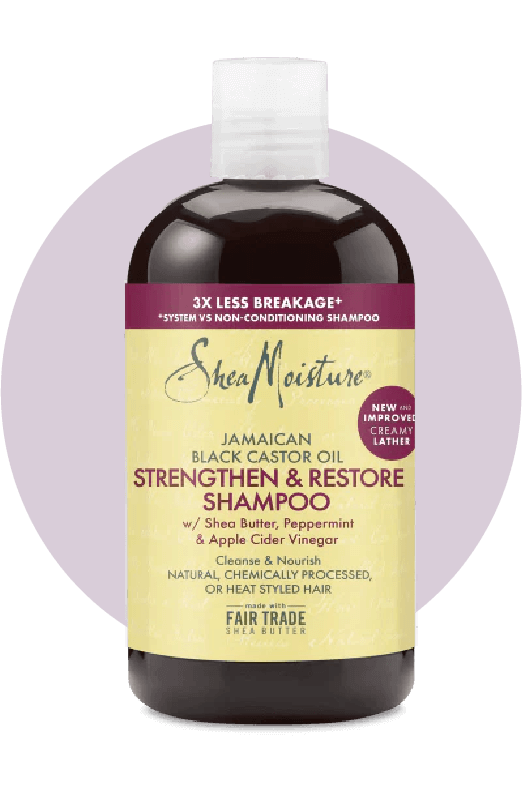
Tip: Wash your hair 2-3 times a week to prevent product buildup, but avoid overwashing, which can strip the scalp of its natural oils.
2. Exfoliate Your Scalp
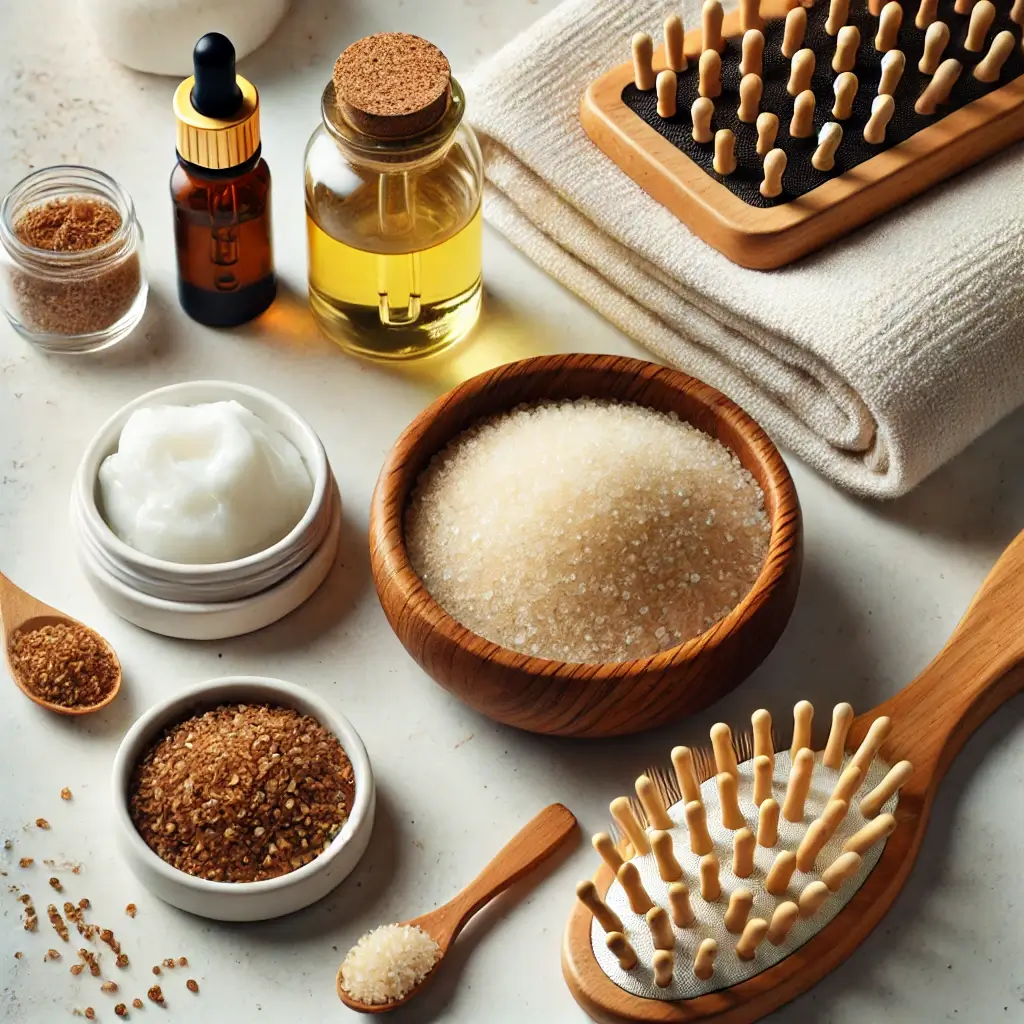 Exfoliating your scalp can help remove dead skin cells and product buildup that contribute to dandruff. Just like the skin on your face, your scalp needs gentle exfoliation to stay healthy. Over time, dead skin cells can accumulate on the scalp, creating flakes.
You can exfoliate your scalp using a scalp scrub or a brush designed for scalp massages. Products with ingredients like sugar or salt can help reduce dead skin without damaging the scalp.
Here is a step-by-step for making a DIY Scalp Scrub:
Exfoliating your scalp can help remove dead skin cells and product buildup that contribute to dandruff. Just like the skin on your face, your scalp needs gentle exfoliation to stay healthy. Over time, dead skin cells can accumulate on the scalp, creating flakes.
You can exfoliate your scalp using a scalp scrub or a brush designed for scalp massages. Products with ingredients like sugar or salt can help reduce dead skin without damaging the scalp.
Here is a step-by-step for making a DIY Scalp Scrub: - 2 tablespoons of brown sugar
- 1 tablespoon of coconut oil
- 5 drops of tea tree oil
Ingredients
- Massage the scrub into your scalp for a few minutes.
- Rinse thoroughly with warm water.
Directions

Tip: Exfoliate your scalp once a week to prevent buildup and encourage healthy skin cell turnover.
3. Try an Anti-Dandruff Shampoo
For tougher cases, such as someone with seborrheic dermatitis, an anti-dandruff shampoo may be necessary. These shampoos target the root of the problem with ingredients like selenium sulfide and ketoconazole. Specifically, they fight dandruff-causing fungi and bacteria. These ingredients also reduce inflammation and can kill the Malassezia fungus.
Recommended Dandruff Shampoo for Biracial Hair:
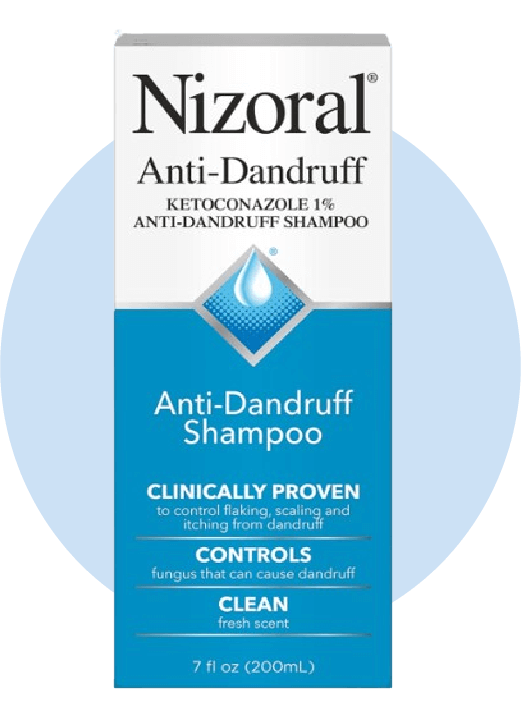
Nizoral A-D Anti-Dandruff Shampoo – This powerful solution, containing 1% Ketoconazole, is highly effective in controlling dandruff. It promotes a fresh scent while targeting the root cause of flakes and itching. Perfect for those with scalp issues, it leaves hair feeling clean, balanced, and dandruff-free.
Neutrogena T/Gel Therapeutic Shampoo – This shampoo may not smell great, but it helps significantly with flaky scalps. Formulated to treat scalp psoriasis, seborrheic dermatitis, and dandruff, this medicated shampoo soothes irritation and reduces flakes. With regular use, it helps restore a healthier, more comfortable scalp, leaving hair clean and refreshed.
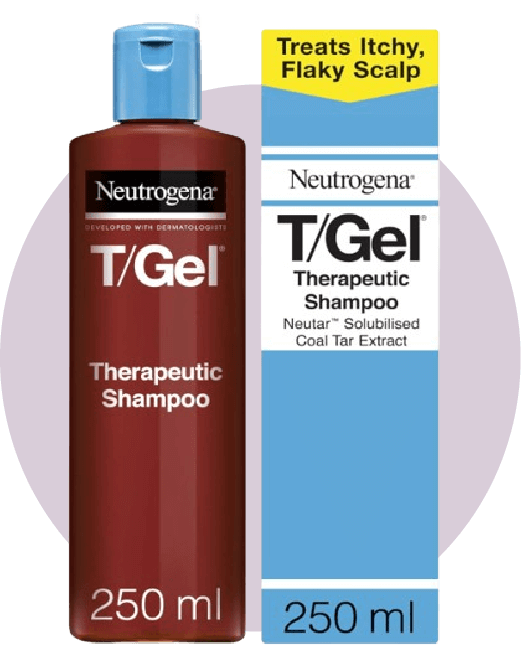
Tip: When using medicated anti-dandruff shampoos, follow the instructions carefully. Overuse can cause scalp dryness or irritation.
4. Moisturize Your Scalp
Dryness is a major contributor to dandruff. Unfortunately, the texture of biracial hair makes it more prone to dryness. To combat dryness, use a moisturizing scalp treatment that provides hydration and nourishment. Look for oils like jojoba oil, argan oil, or castor oil, which can deeply hydrate the scalp and help prevent flaking.
You can also use a leave-in conditioner to moisturize your scalp and hair. Just be sure to choose a product that won’t weigh down your curls or cause buildup on the scalp.
Here is a step-by-step for making a DIY Moisturizing Scalp Treatment:
- 2 tablespoons of olive oil
- 2 tablespoons of coconut oil
- 5 drops of lavender oil
Ingredients
- Warm the oils slightly
- Massage them into your scalp
- Leave the treatment on for 30 minutes to an hour
- Rinse the treatment out
Directions

Tip: Apply moisturizing treatments to the scalp at least once a week, especially if you live in a dry climate.
5. Use Natural Remedies
Several natural ingredients help treat the symptoms of dandruff. You can combine natural remedies with your regular hair care routine to promote scalp health. Some of the best natural ingredients for dandruff control include:
Tea Tree Oil: Tea tree oil has antifungal and antibacterial properties that can help fight the Malassezia fungus. Add a few drops of tea tree oil to your regular shampoo or massage it directly onto the scalp to reduce dandruff.
Apple Cider Vinegar: Apple cider vinegar balances the scalp’s pH level and reduces fungal growth. Dilute apple cider vinegar with water and use it as a rinse after shampooing your hair.
Aloe Vera: Aloe vera has soothing and moisturizing properties to help calm an irritated, dry scalp. Apply aloe vera gel directly to the scalp and leave it on for 15-20 minutes before rinsing.
6. Protect Your Hair and Scalp from the Elements
Environmental factors like cold weather, sun exposure, and humidity can contribute to dandruff in biracial hair. Moisturize your hair and scalp regularly and protect your scalp by wearing a hat or scarf when exposed to harsh weather.
Furthermore, if you spend considerable time outdoors, consider a lightweight sunscreen on your scalp. Sunscreen will help prevent sun damage, which can worsen dryness and flakiness.
7. Maintain a Healthy Diet
You probably hate the word “diet” as much as I do. However, like everything else, a balanced diet contributes to a healthy scalp. Eat a nutrient-rich diet filled with vitamins, minerals, and healthy fats for hair and scalp health. Omega-3 fatty acids, found in fish and walnuts, can help reduce inflammation and promote healthy skin on the scalp.
Vitamins like biotin, zinc, and vitamin E are also crucial for a healthy scalp and hair. Drink plenty of water to stay hydrated, as dehydration can also contribute to a dry, flaky scalp.
Dandruff can be a bothersome problem for people with biracial hair. However, with the right treatments and regular care, you can keep your scalp healthy and dandruff-free. With patience and the right approach, you can maintain a healthy, flake-free scalp while keeping your biracial hair looking and feeling its best.

